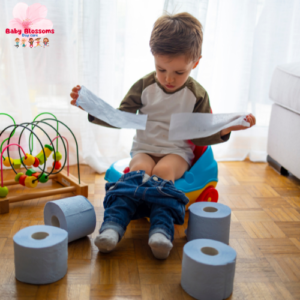
Potty training is an essential milestone in a child’s development, and for parents, it can be a challenging and sometimes frustrating process. When it comes to potty training in a daycare setting, it requires a collaborative effort between parents, caregivers, and the child. Potty training at daycare can be a smooth and successful experience with a consistent approach and positive reinforcement. This blog post will provide valuable tips and strategies for achieving successful potty training in a daycare environment.
1. Establish Clear Communication:
Effective communication between parents, daycare staff, and the child is vital for successful potty training. Start by sharing your child’s potty training routine, including any specific cues or signals they use. Ensure that daycare staff knows your expectations and approach to potty training. Consistency in communication will create a supportive and unified environment for your child.
2. Timing is Key:
Choose an appropriate time to begin potty training at daycare. Ideally, it’s best to initiate activity when your child shows signs of readiness, such as staying dry for extended periods, expressing discomfort with wet diapers, or displaying an interest in using the toilet. Coordinating potty training efforts at home and daycare will reinforce the learning process.
3. Create a Consistent Routine:
Establishing a consistent potty routine at daycare helps children understand expectations and promotes a sense of familiarity. Work with daycare staff to create a schedule that incorporates regular toilet breaks. Encourage using the toilet before and after meals, nap time, and outdoor play. Consistency in routine will reduce confusion and make the transition easier for the child.
4. Reinforce Positive Behavior:
Positive reinforcement is a powerful tool in potty training. Encourage daycare staff to praise and reward children for their efforts and achievements. This can be as simple as verbal praise, stickers, or a small treat. Celebrating successes and creating a positive association with potty training will motivate children to continue their progress.
5. Consistent Language and Cues:
Ensure parents and daycare staff use consistent language and cues when referring to toileting. This helps the child associate specific words or phrases with using the potty. Use simple and age-appropriate terms that the child can easily understand. Consistency in language will minimize confusion and facilitate learning.
6. Provide Necessary Supplies:
Ensure that daycare facilities are equipped with child-sized potty chairs or seats that are easily accessible to the children. Teach children how to use toilet paper, wash their hands, and maintain good hygiene. Stock the daycare area with extra clothing and underwear in case of accidents to ensure a smooth transition during potty training.
7. Patience and Understanding:
Potty training can be challenging and unpredictable, and accidents are inevitable. Both parents and daycare staff must display patience and understanding during this phase. Avoid punishment or scolding when mishaps occur, which can create anxiety or setbacks. Instead, offer reassurance, support, and gentle reminders to use the toilet.
Conclusion:
Potty training in a daycare setting requires teamwork, patience, and consistent efforts from parents and daycare staff. By establishing clear communication, creating a consistent routine, reinforcing positive behavior, and providing necessary supplies, you can set your child up for success in their potty training journey. Remember, every child is different, and progress may vary. Celebrate the small victories and maintain a positive attitude. With time, patience, and a supportive environment, your child will master this essential milestone and become more independent in their self-care skills.
